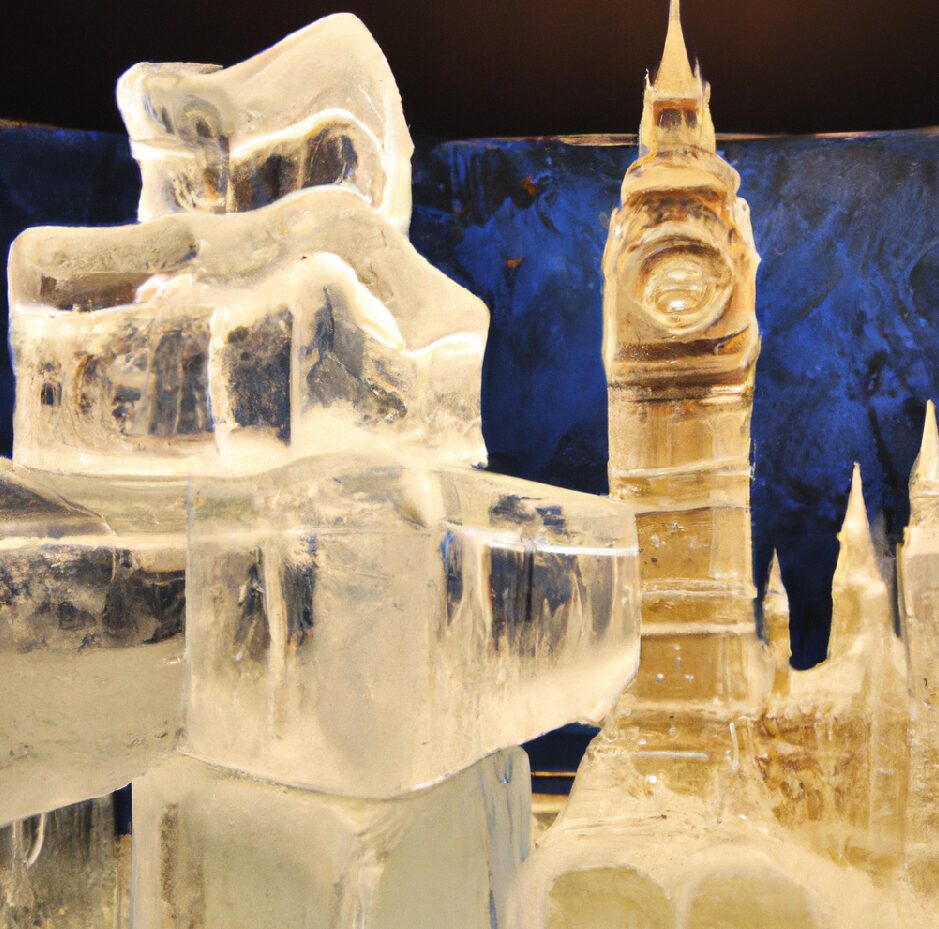How Will We Cool London in 2050?

A society grows great when old (people) plant (street) trees in whose shade they shall never sit.
– Greek Proverb
Dr Luke Bevan, Senior Associate on Zinc’s Deeptech team, shares his thoughts about the solutions needed to cool cities like London and protect the health of citizens. This blog is cross-posted from Luke’s blog which you can find here.
To mark London Climate Action Week this year, I have been thinking about the intersection of urban health and climate resilience. I can’t be the only person opening their windows over the weekend in the vain hope of a cooling breeze during this June heatwave – in fact, this will be the hottest June on record in the UK.
As global temperatures continue to rise due to climate change and heatwaves become more common and intense, it becomes increasingly crucial to address and mitigate the dangers of extreme heat to safeguard human well-being. Prolonged exposure to excessive heat can also exacerbate existing health conditions, such as cardiovascular diseases and respiratory disorders. Vulnerable populations, including the elderly, children, and individuals with chronic illnesses, are particularly susceptible to the health risks associated with heat.
What’s more, cities like London are particularly vulnerable to heat due to the Urban Heat Island effect, where the temperature of cities tends to be greater than their surroundings. This is because of how cities are built, with masses of heavy heat-retaining concrete, dark surfaces such as tarmac that absorb sunlight, tall buildings that obstruct the wind and fewer trees to fuel cooling by evapotranspiration. The effect is so pronounced that London can be up to 8˚C warmer than the green belt on a summer night and are on average 3-5˚C warmer during the summer.
London isn’t built for extreme heat. But there is no avoiding the warming to which we are committed by historical emissions, so the question is: how do we retrofit an entire metropolis to deal with periods of high heat? What are the options for keeping cool and protecting the health of Londoners?
The solutions can be broadly split into passive cooling, which uses natural conduction, convection and radiation, and active cooling, which requires an energy input to do the cooling. Let’s look at a few of the options and explore some of the unsolved problems associated with their deployment.
Passive cooling on a big scale: breaking up the heat island
The first thing we can think about doing, on a large scale, is finding ways of reshaping the city to limit the urban heat island effect. What material changes to the urban form can we affect without razing large areas of the city (generally considered undesirable unless you are a 1950s urban planner)?
Throwing Shade
As ever, nature is our friend, the inclusion of trees and greenery can provide natural cooling through shading and cooling by evapotranspiration. London is already an extremely green metropolis, with over 8 million trees covering around 21% of its land area, enough for London to be described as an urban forest.
We are already doing quite well for trees; how can we do better?
We can also think about greening up buildings. Green rooves can intercept radiation before it hits a building and cool it through evaporation. However, these are only somewhat practical as the mass of growth medium required for planting cannot be safely held on many rooves. Moreover, all the additional engineering required to waterproof underneath and hold everything in place can mean the system may have dubious climate benefits overall.
Shiny City
Another way to prevent the urban heat island effect is to make the city shinier, literally. That London can be made more lustrous won’t come as a surprise to regular London Underground commuters.
We can polish up the city in many ways as simple as painting rooves white to reflect radiation back into space, increasing the albedo of the city. Special paints can be developed that are particularly reflective in the right range of wavelengths to most effectively shed heat.
(In a quiet voice to not anger motorists) maybe, just maybe, we could have a bit less tarmac as well?
Passive cooling for buildings
Last year, I cycled through the middle of France during a record-breaking heatwave. One of the most comfortable night’s sleep I got in the interminable heat was in a charming old cottage with meter-thick walls. This was because the massive thermal mass of the walls provided inertia that evened out the temperature fluctuations. The same principle can be applied to new buildings and has the double advantage of maintaining a steadier indoor temperature during cold nights.
Other low-tech ways of passively cooling houses are possible, such as exterior shading. Visitors to hotter countries will notice that shades are best placed on the outside of buildings.
The extent to which adopting best practices in new homes will have an aggregate effect on the availability of cooling in London over the next 20 or so years seems marginal. We currently only build around 40-50,000 new homes in London per annum, about 1% of the 4 million dwellings in the capital. And filling these homes with massive concrete slabs seems to cut against other goals around reducing embodied emissions in buildings. The majority of the housing stock in 2050 will be what we have today, i.e. poorly designed for a climate-changed future.
Active cooling: AirCon of the future
Fundamentally, we also need to provide access to active cooling. The UK has far less air conditioning compared with other highly developed nations in access to air conditioning with only 5% of buildings possessing air conditioning- compare this to nearly 90% of US households.
The standard type of air conditioner familiar to most is what is called a vapour compression conditioner. It works by using a fluid that absorbs heat from inside a building, as it evaporates it absorbs heat and is pumped through a compressor to outside. As it is compressed it condenses and releases heat to the outside before heading back inside in a loop.
AirCon is great. Arguably it is one of the most economically transformative technologies of the last centuries, allowing the urbanisation of the tropics and increasing productivity worldwide.
However, as far as the climate goes, air conditioning has some major unintended consequences.
Firstly, they are very energy-hungry, consuming energy from fossil fuels that drive climate change. They are responsible for almost 2 megatonnes, or around 4% of global greenhouse gas emissions annually.
This energy thirst can also be a problem for grid operations. During a record-breaking heatwave in 2020, the massive load of air conditioners on the Californian grid caused the gird operator to blackout hundred of thousands of homes. Demand for air conditioning will increase dramatically worldwide with income growth and rising temperatures and this energy demand will have concomitant carbon emissions.
Secondly, air conditioners often use refrigerants with a high global warming potential, such as HCFCs, HFCs and (formerly) CFCs. These can have warming potentials thousands of times greater than the same mass of carbon dioxide.
The good thing is that the standard vapour compression cycle aircon is not the only technology in town and the competition to develop better air conditioners is hotting up. Technologies like desiccant, absorption, adsorption and evaporative cooling can achieve superior efficiencies, as well as using alternative working materials that don’t have the greenhouse gas effect of other coolants.
Cold storage also has the potential to reduce many issues as it allows the decoupling of the supply of energy and demand for cooling. This has the benefits of reducing the peak demand for cooling, which can cause chaos for grid operators, as well as allowing ‘cold batteries’ to charge during times in which electricity on the grid is coming from renewable sources.
The reality of rolling out air conditioners in a city like London is complicated again by existing building stock. Some air conditioners require ducting inside a building to shuttle the refrigerant between the indoor unit (the evaporator) and the outdoor unit (condenser), and with a very heterogenous stock of buildings, this can be highly expensive and difficult to scale.
These innovations in active cooling will, in the short term at least, have higher capital costs than status-quo technologies. They may however render significant savings in operational costs from increased efficiencies. Cooling as a Service (CaaS) business models have the potential to allow end users to realise these savings and overcome the installation cost hurdles.
Tackling heat threats to people’s health
The solutions on which London and other cities must rely to manage heat blend the high-tech & low-tech, the big and the small. The problems that we will need to solve along the way are diverse: covering the city greenery, retrofitting ageing housing stock for passive cooling, managing F-gases, decoupling cooling demand & energy supply, and ducting old houses for aircon.
At Zinc, managing the effects of climate change on our health, such as extreme heat, is forming part of a new mission we are kicking off later this year.
In October 2023, we are bringing together a diverse and talented group of entrepreneurs on a mission to tackle environmental threats to our health. We believe that entrepreneurship and technology are powerful means to tackle these challenges. We are looking to invest in 70 founders to build new, innovative companies which address this mission. This cohort of founders will combine experts in health and the environment, with talented technical and commercial individuals who can build successful products and services.
If you or someone you know has the ambition to build a commercial VC-backed business, you can check out our mission here apply to join the Venture Builder.
Join the Zinc community
Stay up to date with all Zinc updates and future posts as part of our fast growing community.
Featured Resources
Zinc Impact Report 2024
Zinc’s mission is to make the UK the best place to successfully start a venture which can have a massive impact on the health of people and the planet.
Increasingly, we are building deeper science ventures that serve global, industrial customers in environment and health, giving access to impact at a global scale.
Our 2024 Impact Report explores the challenges that need to be tackled to empower and enable talented founders from around the world to solve critical health and environmental challenges at scale, from here in the UK.
This report showcases success stories from the Zinc portfolio, and highlights how Zinc – and our growing community of hundreds of Founders, Fellows, Coaches, Partners and Funders – are working together to build a world-leading “Science-for-Impact” ecosystem for inception stage ventures in health and environment.
Impact Report 2023
We started Zinc with the hypothesis that missions are an effective way to attract highly ambitious, talented and experienced groups of innovators, who might not recognise themselves as “classic entrepreneurs” but are ready and able to start a new commercial and successful venture to tackle some of our most pressing societal issues.
The world has overcome the sorts of challenges we face today when it has adopted a mission-based approach to the biggest problems and brought together world-class talent to invent and innovate, e.g: NASA and landing a man on the moon, the LSE blueprinting the British welfare state, or the Gates Foundation aiming to eradicate diseases.
On this basis and assumption, we designed Zinc as a new mission-based Venture Builder — a place where global talent, ‘impact makers’, can join to experiment and develop new solutions to our most pressing societal issues.

